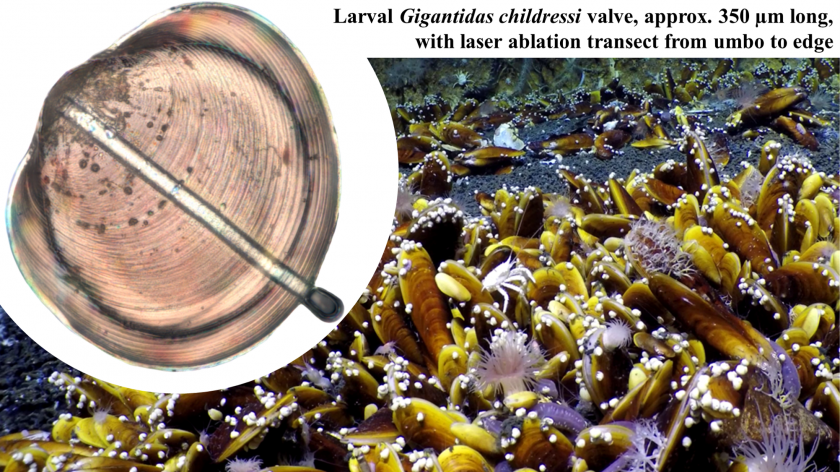Media Releases Archive
October 2025
Shell trace elemental fingerprints infer spatiotemporal isolation of larval population pools of the deep-sea methane seep mussel Gigantidas childressi
October 23, 2025
Shell trace elemental fingerprints infer spatiotemporal isolation of larval population pools of the deep-sea methane seep mussel Gigantidas childressi
Ian J. Grace1, David B. Eggleston1,2, Nathaniel R. Miller3, Jamie P. Williams1, Craig M. Young4
1Department of Marine, Earth, and Atmospheric Sciences, North Carolina State University, Raleigh, NC
2Center for Marine Sciences and Technology (CMAST), North Carolina State University, Morehead City, NC
3Jackson School of Geosciences, University of Texas at Austin, Austin, TX
4Oregon Institute of Marine Biology, University of Oregon, Charleston, OR
Larval dispersal drives metapopulation connectivity, which is a key metric in understanding and predicting the resilience of populations to natural and anthropogenic disturbances. In the deep sea, however, larval dispersal remains poorly understood due to the limited applicability of traditional nearshore approaches for collecting larvae or applying biophysical models that predict dispersal. Thus, laser ablation ICPMS was used to analyze shell trace elemental fingerprints of the deep-sea methane seep mussel Gigantidas childressi to infer the mixing and isolation of larval population pools and their potential dispersal trajectories among depths (500-1,400 m), five methane seep sites, and spawning and dispersal periods (3 sampling years) in the Gulf of Mexico. The laser ablation approach facilitated a high degree of spatial discrimination within each valve, allowing analysis of three distinct shell growth regions along the axis of maximum growth associated with early dispersal, mid-to-late dispersal, and settlement. Multivariate analyses found that fingerprints differed significantly among each spatiotemporal scale, particularly later in dispersal. In particular, Ba:Ca ratios decreased and Ni:Ca and Mn:Ca ratios increased with depth, and these elemental ratios strongly correlated with differences in fingerprints among sites, which may indicate that larvae that recruit to deeper sites may not have access to food sources with elevated elemental concentrations, such as certain phytoplankton taxa, compared to larvae that recruit to shallow sites. Additionally, Mg:Ca ratios strongly correlated with differences in fingerprints among sampling years. Overall, results suggest that over short timescales of years, G. childressi larval population pools and their dispersal trajectories may be subtly spatiotemporally isolated, which may reduce population resilience to climate change and other anthropogenic impacts.
